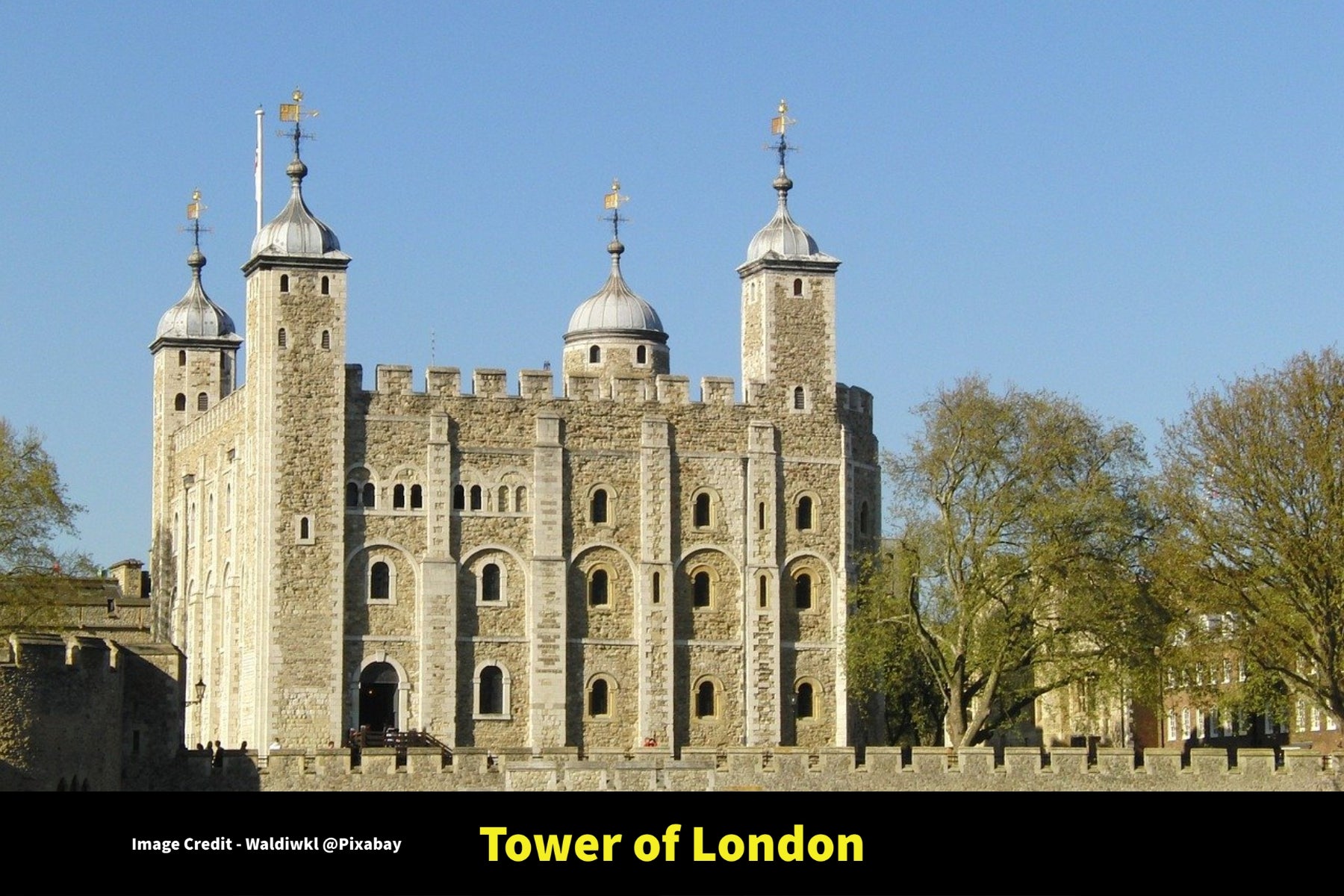check reviews now
check reviews now...

The majestic Tower of London has served various purposes over the years, from prison to castle, treasure vault to private zoo. This majestic World Heritage Site, one of Britain's most famous monuments, provides hours of intrigue for tourists interested in the country's rich history - after all, so much of it happened here. The 17th-century Line of Kings, with its magnificent displays of royal weaponry and armour, is housed within the enormous White Tower, which was constructed in 1078 by William the Conqueror.
The Tower of London Address: London EC3N 4AB
Tower of London Opening Hours:
|
Tuesday |
9am–4:30pm |
|
Wednesday |
9am–4:30pm |
|
Thursday |
9am–4:30pm |
|
Friday |
10am–4:30pm |
|
Saturday |
10am–4:30pm |
|
Sunday |
10am–4:30pm |
|
Monday |
9am–4:30pm |
https://www.hrp.org.uk/tower-of-london
Tower of London Entry Fee
4.6 - 76,374 Google reviews
4.8 - 47,149 Facebook votes
4.5 - 65,847 TripAdvisor reviews
TOWER HILL STATION
The nearest tube station is TOWER HILL and it´s about 5 minutes’ walk from The Tower of London.
Several mainline stations, including: are within reasonable walking distance of the Tower.
The famous Crown Jewels display, the Beefeaters, the Royal Mint, and horrific exhibitions depicting the executions that took place on the grounds are among the other attractions. The Bloody Tower tells the storey of ancient torture, as well as the mystery of two princes who went missing many years ago.
The Tower of London is a mediaeval castle on the north bank of the River Thames in downtown London, formally Her Majesty's Royal Palace and Fortress of the Tower of London. It is located inside the London Borough of Tower Hamlets, which is separated from the eastern end of the City of London square mile by Tower Hill. As part of the Norman Conquest, it was founded at the end of 1066.
The White Tower, which gave the castle its name, was erected in 1078 by William the Conqueror and was a symbol of tyranny inflicted on London by the new governing class. Although it was not its major function, the castle was utilised as a jail from 1100 (Ranulf Flambard) until 1952 (Kray twins),[3]. It was formerly a beautiful mansion that functioned as a royal dwelling. The Tower is a collection of structures encircled by two concentric rings of defensive walls and a moat. In the 12th and 13th centuries, there were various episodes of development, primarily under the reigns of Richard I, Henry III, and Edward I.
Despite further development on the site, the fundamental plan created by the late 13th century has survived.
The Tower of London has a long and illustrious history in England. It has been besieged multiple times, and maintaining control over it has been crucial to maintaining authority over the country. The Tower has operated as an armoury, a treasury, a menagerie, the Royal Mint's headquarters, a public record office, and the home of England's Crown Jewels, among other things. On the coronation of a king, a procession would be led from the Tower to Westminster Abbey from the early 14th century until the reign of Charles II in the 17th century. The Constable of the Tower is in control of the castle while the king is not there.
In mediaeval times, this was a powerful and trusted post. The Princes in the Tower were confined at the castle in the late 15th century until they inexplicably vanished, probably dead. The Tower was used less as a royal home under the Tudors, and despite attempts to refortify and maintain the fortress, its defences fell behind improvements in cannon defences.
The castle's function as a jail peaked in the 16th and 17th centuries, when it housed many prominent persons in disgrace, including Elizabeth I before she became queen, Sir Walter Raleigh, and Elizabeth Throckmorton. As a result of this usage, the phrase "sent to the Tower" was coined. Only seven persons were killed within the Tower before the World Wars of the twentieth century, despite its continuing image as a site of torture and death popularised by 16th-century religious propagandists and 19th-century novelists.
Beheadings were more prevalent on Tower Hill, to the north of the castle, where 112 were carried out over a 400-year span. Institutions such as the Royal Mint moved out of the castle in the second part of the nineteenth century, leaving several structures unoccupied. Anthony Salvin and John Taylor took advantage of the chance to restore the Tower to its mediaeval aspect, removing several of the post-medieval constructions in the process.
During the First and Second World Wars, the Tower was once again utilised as a jail, when 12 individuals were executed for espionage. The devastation inflicted by the Blitz was restored after WWII, and the castle was reopened to the public. The Tower of London is now one of the most visited tourist destinations in the country. The property is cared for by the charity Historic Royal Palaces and is protected as a World Heritage Site under the ceremonial responsibility of the Constable of the Tower and administered by the Resident Governor of the Tower of London and Keeper of the Jewel House.